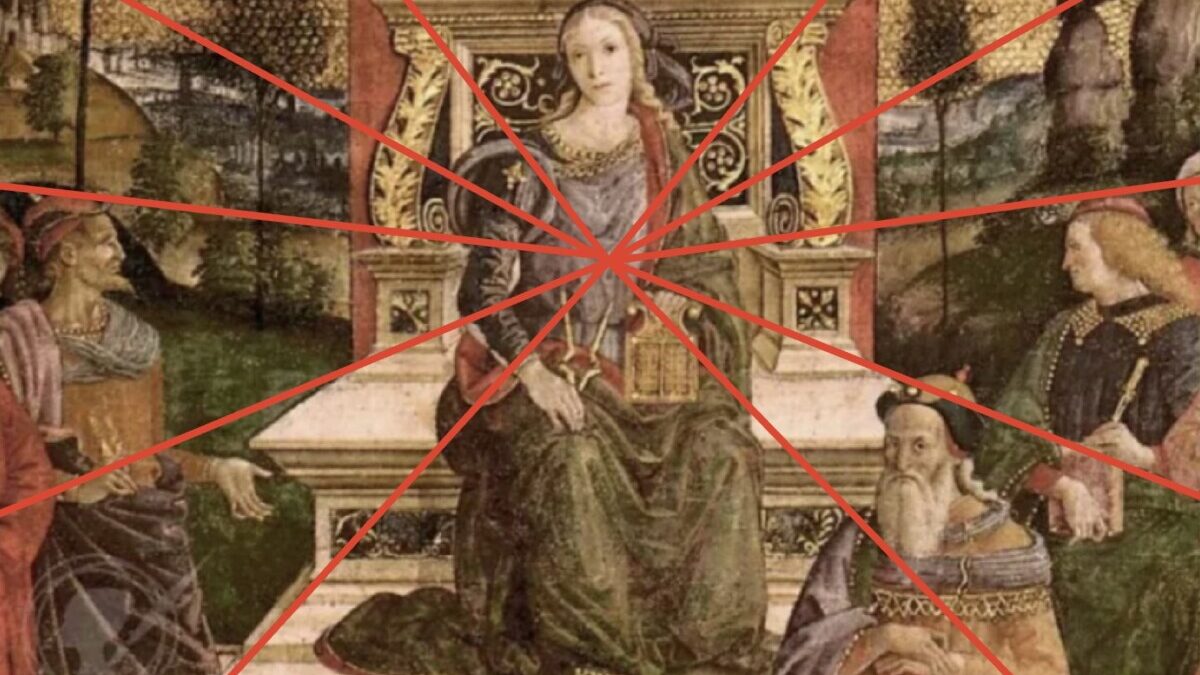Video:
The Aesthetics of Narcissism
The article starts with, “It was a common place of criticism in the 1960s that a strict application of symmetry allowed a painter to ‘point to the center of the canvas’.” (Krauss, 50)
It reminds me of the passage Ideological Effects of the Basic Cinematographic Apparatus Jean-Louis Baudry wrote. Both that passage and this one mention painting traditions. In fact, all art forms tend to position towards the center. In paintings, we usually see the main subject matter in the center, something like this (that I randomly found and drew):

That reflects the self-centered narcissism, which “describes a psychological rather than a physical condition.” (Krauss, 50)
Video art is indeed a mutual process. When the filming apparatus works, the body that is recorded also has to respond to this process, creating a feedback loop, which connects to the artwork Boomerang (1974) in which the performer experiences a weird self-awareness when she hears her own voice keep getting send back to her earphones instantly after she speaks, like a “mirror” experience.
Krauss also states the difference between “reflection”, which means external symmetry and “reflexiveness”, which is asymmetry from within. Reflection usually involves the use of mirrors, and it produces the exact same symmetrical image in the outside world. Reflexiveness in the context of video art is like the feedback from the artist’s inner mind and creates an interaction with the art medium itself.
My question: A clearer explanation of the relationship between the projection on screen and the projection of oneself?
The Rio Experience:
Video’s New Architecture Meets Corporate Sponsorship
The content in this reading got me thinking that I have the gradual feeling that larger art projects involving using a large wall or a building’s exterior are becoming more and more prevalent all over the world. Coming from China myself, there are some buildings used for 3D animation artwork at major shopping malls in Beijing, Shanghai, and Chengdu.
The cost is usually very high, so it poses challenges to artists who wants to achieve this kind of art. Another issue also lies in the uncertainty of whether these arts can make profits. An imbalance and conflict between major corporations and independent artist thus forms. Unless the artists are extremely rich themselves, it is impossible to do without sponsorship. It is probable that these artists are respected better and have lesser difficulty in acquiring the funds they need nowadays. In future media landscape, there should be less conflict between the commercial and artistic value in order for video arts to thrive.